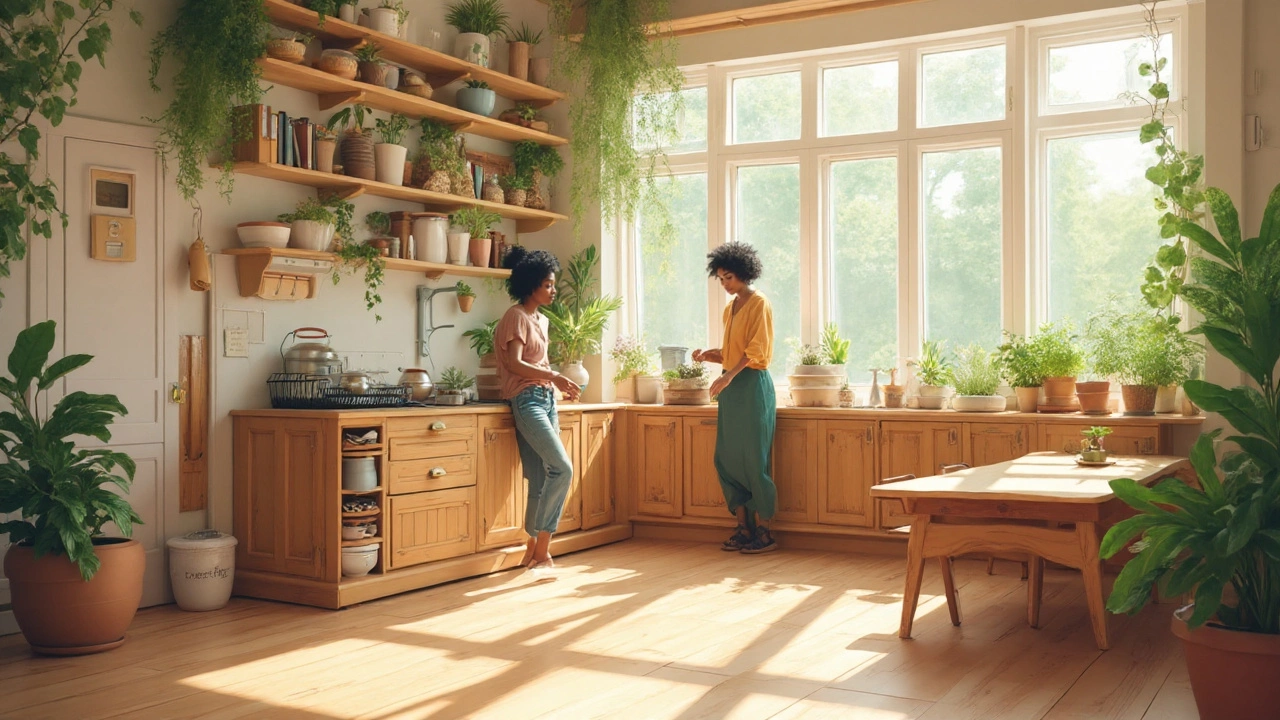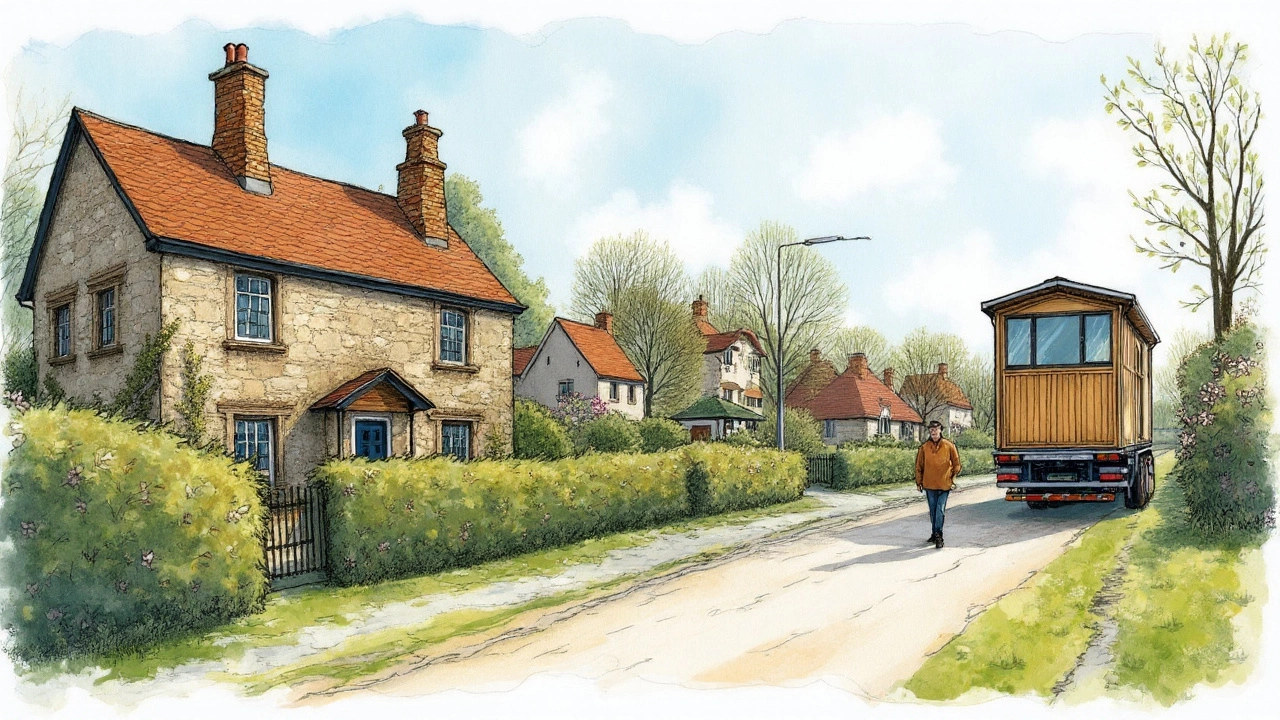If you think that the house you live in barely leaves a mark on the planet, you’re in for a shock. Housing chews up about 40% of the world’s total energy use. And if your house is a typical suburban block, it probably tosses out a similar share of waste and greenhouse gases too. Yikes. But here’s the kicker—it doesn’t have to be that way. Eco friendly housing isn’t just some fringe idea for nature-obsessed idealists. It’s real, it’s growing fast, and you don’t have to live in a mud hut out in the woods to be part of it. The best part? There’s a surprising amount of science, creativity, and plain old common sense in these design choices. Ever wondered what really makes a home ‘green’? Let’s break it down and see what types of housing truly tread lightly on the earth.
Tiny Houses, Passive Houses, and Natural Building: What’s the Greenest Way to Build?
When people picture eco housing, what pops into your head? A solar panel-topped cabin? A straw bale house with a green roof bursting with wildflowers? Maybe even a sleek, futuristic tiny house that looks like something out of a Black Mirror episode? Let’s get to the facts behind the most popular green housing options and see how they stack up.
First up: environmentally friendly housing has become a catch-all phrase. But not every so-called green building is created equal. Here’s a quick look at how some leaders on the eco-friendly front actually work:
- Tiny Houses: These generally range from 9 to 37 square meters (about 100 to 400 square feet). Less space means fewer resources used to build, heat, and maintain—obviously. This drastically cuts your housing carbon footprint. Living tiny isn’t always practical for a family, but it’s easy to see why the "tiny house movement" exploded after the 2008 housing crash — less stuff, less stress, more control over bills, and a lighter impact on the earth. Downsizing is arguably one of the fastest ways to slash your home's emissions. Real studies show a family’s energy use can drop by more than 45% just by moving to a home half the size of their old one.
- Passive Houses: If there’s a gold standard for no-nonsense green building, the German-born Passivhaus (or Passive House) system might be it. These homes rely on extreme insulation, airtight construction, triple-glazed windows, and strategic south-facing designs that slash energy use by as much as 90% compared to normal buildings. No drafts, no wild heating bills, and no weird mud construction required. As of 2024, there were more than 100,000 certified Passive Houses globally, and the number keeps jumping.
- Natural Building Methods: Earthships, cob houses, rammed earth, straw bale—you get the idea. These use little-to-no new construction materials. Instead, they use things you dig up or grow: clay, straw, dirt, reclaimed wood, and more. They’re often super-insulated, super-cheap, and honestly quite attractive if you like that Hobbit aesthetic. The biggest challenge? Local building codes in some areas still haven’t caught up, so approvals can be slower and trickier.
- Modular or Prefab Homes: The idea here is simple: build most of the house in a factory, then ship it to your site to assemble. This cuts construction waste hugely, and good prefab homes can use recycled or renewable materials, come with roofs ready for solar, and be assembled in a week. Studies out of the UK and Australia have found prefab homes can be built producing up to 75% less waste than standard on-site builds.
Worried about longevity? Don’t be. Modern straw bale homes can last more than a century if kept dry, and rammed earth walls often outlive brick or wood-framed buildings. Plus, there are clever workarounds for almost any climate—think green roofs in northern Europe, earth berms in the deserts of the southwest US, or green walls in city towers. Bottom line: Eco-housing is more than just a trend; it’s shaping how future generations will live.

Eco Materials, Energy Use, and Water Footprint: What Makes a Home Truly Sustainable?
Okay, so what makes a house truly green? Size and shape do matter, but the materials used—and how they’re sourced—can push a home from "kinda green" to "planet-saving legend." Here’s how the nuts and bolts stack up.
- Materials: Bamboo grows crazy fast—some species can shoot up 90 cm in a day—making it a champion for renewable flooring and beams. Sheep's wool insulation works just as well as fiberglass, but it's biodegradable and non-toxic. Reclaimed bricks, recycled steel, timber from certified sustainable forests, and low-VOC (volatile organic compound) paints all cut down on the carbon stew that comes with most traditional materials. Ever heard of hempcrete? It’s a mix of hemp fibers and lime; it breathes well, mold doesn't like it, and it actually absorbs more CO2 than what’s used to make it.
- Energy: Solar panels have dropped in price about 80% since 2010 and are now the fastest, easiest investment for homeowners who want to slash their utility bills and emissions. Pair them with smart batteries, and a home can run off-grid for days. Heat pumps (air-source or ground-source) are now up to four times as efficient as traditional heaters, and more companies make entire net-zero systems—including water heating—that plug and play into existing homes.
- Water: Plumbing’s not glamorous, but old-school houses are water hogs. Dual-flush toilets, rainwater collection, low-flow fixtures, and greywater systems (which recycle your shower water for lawns or toilets) can chop a home’s water use by more than half. Xeriscaping—the cool-sounding name for yards using only native, drought-resistant plants—takes things further. Cities from Los Angeles to Sydney offer cash rebates for replacing grass lawns and thirsty hedges with smarter, drier landscape designs.
- Long-Term Impact: Life-cycle analysis (that’s nerd-speak for "cradle-to-grave" impact) is where the truth comes out. Stone sounds natural, but quarrying and shipping is brutally energy-intensive. Even traditional 'green' materials like wood need careful management to avoid deforestation. The greenest homes often combine smart design, local or recycled materials, and just enough tech (like solar) to cover their needs without overbuilding.
| Eco Feature | Percent Energy Saved | CO2 Reduction (tons/year) | Upfront Cost | Avg Payback (years) |
|---|---|---|---|---|
| Passive House Design | Up to 90% | 3-7 | 10-15% higher | 7-10 |
| Tiny Home | Up to 60% | 2-4 | Lower | 2-5 |
| Solar Panels | 30-70% | 1-3 | £3,000-£12,000 | 5-8 |
| Rainwater Harvesting | 20-30% | ~0.1 | £1,000-£5,000 | 5-10 |
One more thing people miss: retrofitting existing homes is nearly always greener than building brand new, even if the building isn’t perfect. It takes huge amounts of energy to create cement, steel, and glass. Adding insulation, sealing leaks, or even converting to electric heat can have a far bigger impact than demolishing and starting from scratch.

Tips for Choosing the Most Eco Friendly Housing Option for Your Life
No one-size-fits-all solution here. Your most eco-friendly home will depend on where you live, how many people are living with you, your budget, and even the building codes in your particular region. But there are a few key moves anyone can make to get as close to green perfection as humanly possible.
- Start Small: That doesn’t mean living in a shoebox, but it does mean thinking hard about unused rooms, wasteful lofts, and oversized living spaces. Every unnecessary square meter adds to heating, cooling, cleaning, and environmental impact over time.
- Renovate Before You Rebuild: If you own a home, see what you can upgrade—insulation, windows, efficient lighting—before dreaming of a brand-new eco palace. Locally, many places offer rebates for things like solar panels, heat pumps, or energy-efficient windows. The fastest carbon payback is almost always a smart retrofit.
- Pick Materials Wisely: Use local, recycled, or sustainably harvested materials when possible. Reclaimed wood isn’t just for Pinterest; it lasts well and skips the need for fresh timber. For paint and finishes, low-VOC options protect both the climate and your indoor air.
- Go Modular if You Build New: Modern modular or prefab homes get green points by drastically cutting construction waste and time. Ask builders about what percentage of their materials are recycled or renewable.
- Consider Location: Living near work, shops, and public transport saves tons of energy by cutting down on car trips. Urban living often means smaller homes and shared walls that save huge amounts of heating and cooling energy.
- Think Renewable: Solar, heat pumps, even small rooftop wind turbines can bring energy use way down. Not every solution fits every house, but with global energy prices so unpredictable (hello, $2.50/litre for petrol in Europe as of July 2025), renewables are now smart economics as much as good ethics.
- Smarter Water Use: From low-flow toilets to native plantings, sensible water-saving choices pay off in utility savings and environmental impact, too. If you can, install a rain barrel or greywater system.
- Fix What's Broken First: Sealing air leaks, cleaning your HVAC filters, or replacing old bulbs with LEDs can make a bigger dent in your carbon output than installing a composting toilet or a wild new gadget.
The greenest home is usually the one you already have—or at least the smallest upgrade that makes it radically more energy and water smart. Whether you’re eyeing a tiny home, a straw bale cabin, or just an upgraded flat, the steps you take now build a foundation for easier, cheaper, lighter living. And honestly, who doesn’t want a house that costs less to run, feels better to live in, and adds a little goodness back to the world each morning you wake up?

